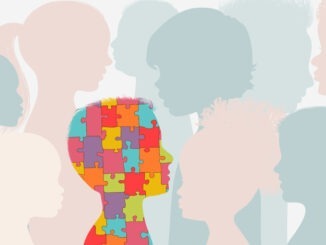In a bid to improve inclusivity, organisations are striving to create inclusive environments that cater to everyone’s needs. From dyslexia to dyspraxia and ADHD, understanding and addressing these differences is crucial for fostering supportive learning environments
As the world wakes up to the natural differences that are within all of us, organisations are thinking more frequently about how to provide environments that are inclusive to everyone. Recognising the diverse needs and preferences within the neurodivergent population, it’s clear that there’s no one size fits all solution. Instead, careful attention must be paid to the unique requirements of each person.
Understanding the distinctions between common types of neurodiversity is another valuable tool for educational leaders. With a deeper understanding of the needs of neurodiverse students and staff, school business leaders can play a crucial role in fostering supportive learning environments.
Dyslexia
Dyslexia, a learning difficulty impacting word reading and spelling skills, affects approximately one in ten individuals, underscoring the necessity of supporting teachers and students through the provision of supportive equipment. Providing coloured overlay reading panels can aid reading, while adopting neurodiverse-inclusive equipment like tinted paper notepads and writing materials can reduce visual stress. Schools can also explore various assistive keyboards, digital reading aids, and pen readers to enhance the accessibility of ICT equipment. It may be useful to consult your ICT equipment provider for guidance on selecting appropriate tools for students’ needs.
Dyspraxia
Given that dyspraxia impacts coordination and movement, SBLs can support both staff and students by integrating equipment tailored to enhance visual communication and fine motor skills. This might include providing handwriting aids or exploring alternative writing tools beyond traditional pens. Textured grips and weighted writing instruments can prove particularly advantageous. Additionally, ensuring individuals with dyspraxia have ample space and appropriate layouts to work effectively is crucial. SBLs can contribute by assessing the desk space available to students and teachers, ensuring it’s not overly restrictive. This may involve offering opportunities to work outside their usual environment, such as at larger tables.
ADHD
In supporting students with ADHD, it’s essential to carefully consider the sensory environment within the learning space. Allowing the use of fidget toys and incorporating tactile furnishings can aid in enhancing grounding, focus, and promoting a sense of calm. Introducing sensory seating options, like the popular ‘wobble cushion,’ can greatly benefit children who easily feel overwhelmed. Additionally, it’s valuable for SBLs to recognise that staff members with autism often benefit from support with organisation and time management. Providing tools that facilitate these aspects can be particularly helpful.
Creating an inclusive workplace isn’t just about providing the correct equipment; it entails cultivating a culture of empathy, respect, and comprehension. As SBLs deepen their grasp of neurodiversity, they not only provide support for their neurodivergent staff and students but also enhance the overall dynamics of their school community.
In the concluding segment of this series, we’ll delve into strategies for SBLs to enhance neurodiversity awareness and understanding among their teams through training and effective communication.





Be the first to comment